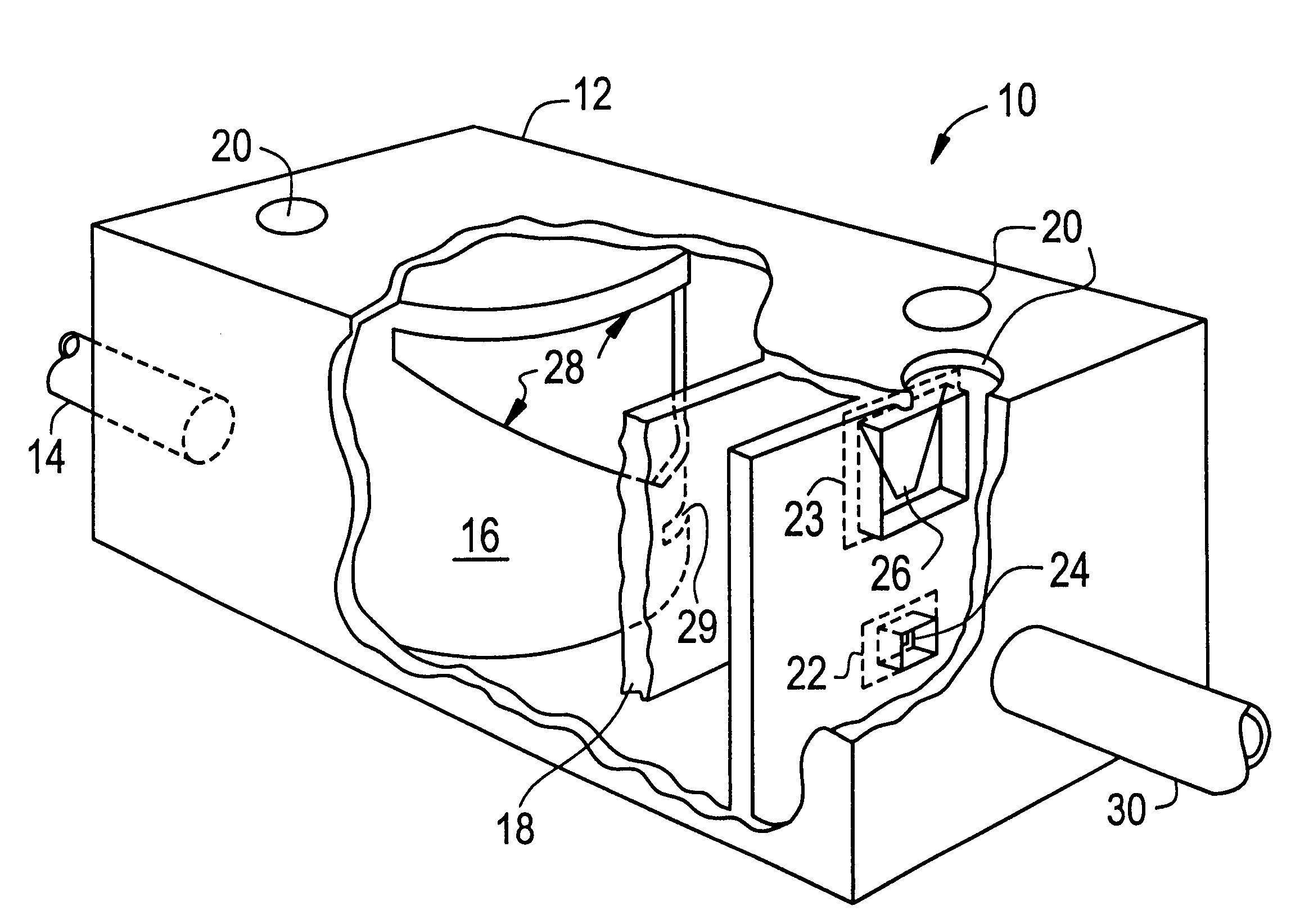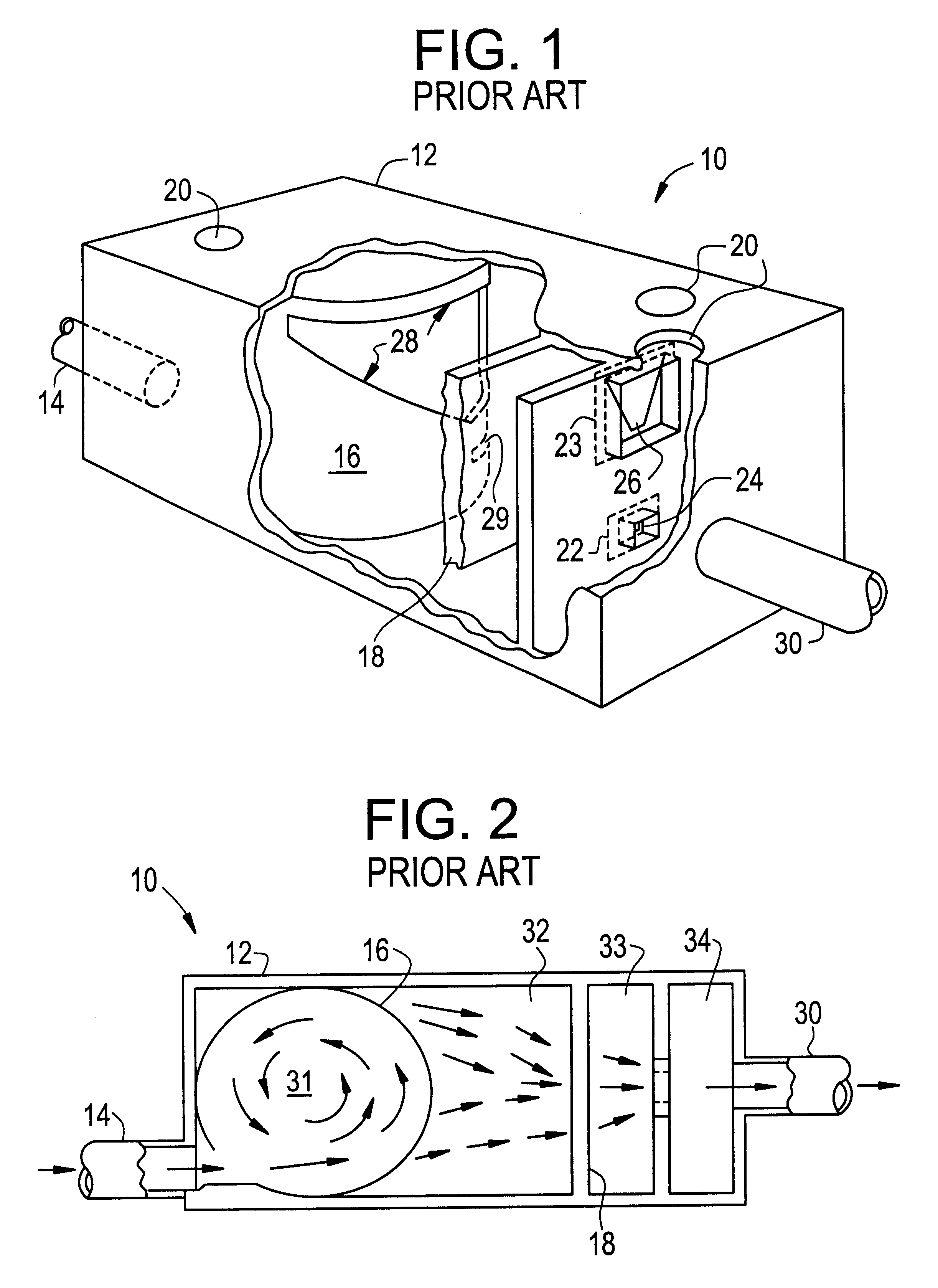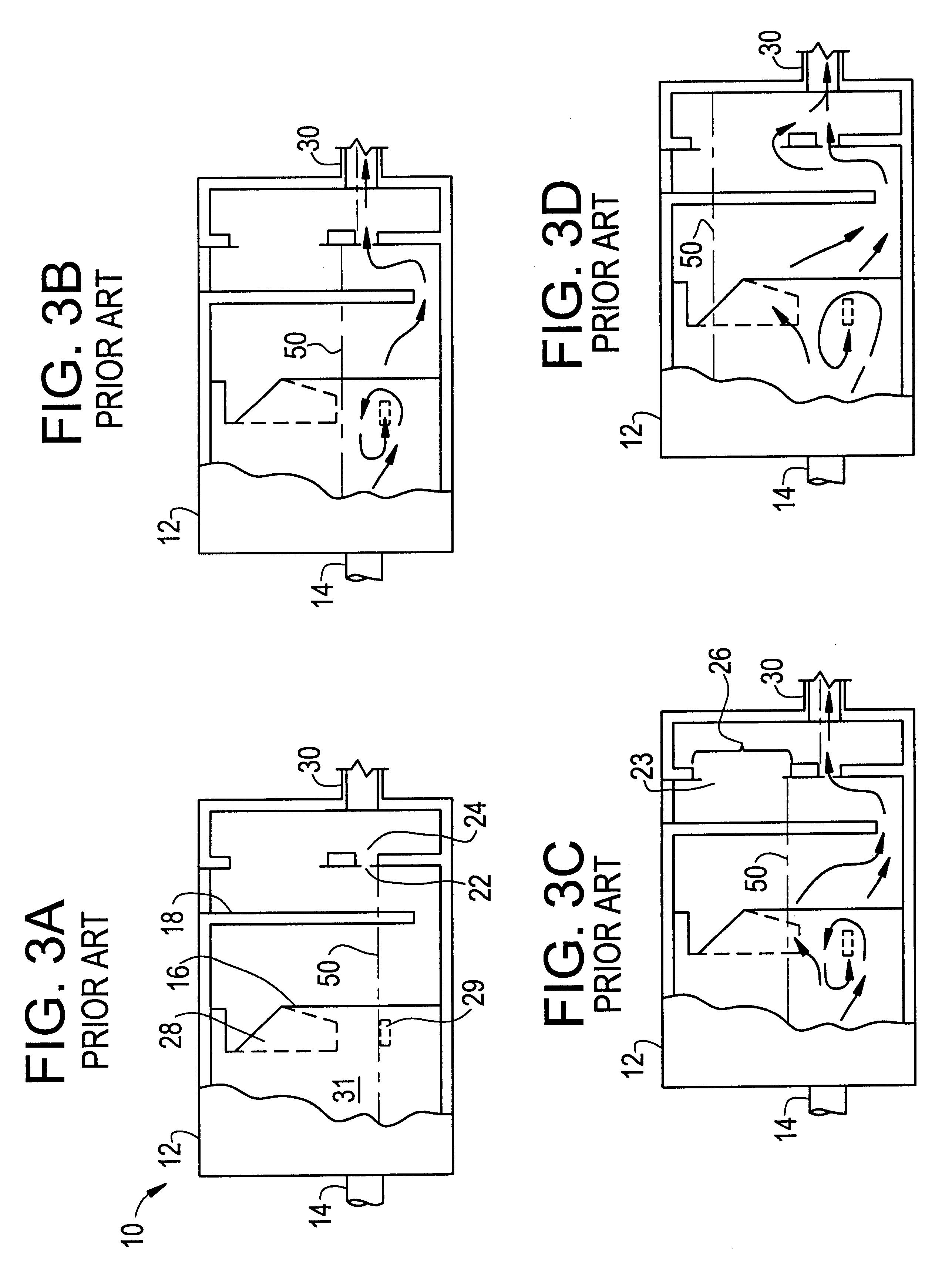Apparatus for removing noxious contaminants from drainage water
a technology for removing noxious contaminants and drainage water, which is applied in the direction of sediment separation, water/sewage treatment by ion exchange, and sedimentation settling tanks, etc. it can solve the problems of water sources contaminated with pernicious slightly soluble organic compounds, benzene, toluene, etc., and achieve strong affinities
- Summary
- Abstract
- Description
- Claims
- Application Information
AI Technical Summary
Benefits of technology
Problems solved by technology
Method used
Image
Examples
example 1
In order to prepare a filter substrate for use in the invention, an infusion solution is prepared from a suitable solvent and the absorbent composition. In this example a solution was prepared from 90 w / w 99.9% acetone and 10 w / w absorbent composition which is the reaction product of 31% isobutyl methacrylate, 31% ELVACITE 2045, and 66% linseed oil. The absorbent composition is added to a closed explosion-proof mixer with the acetone and mixed for 12 hours or until the solution becomes homogeneous. The substrate in this Example was a nonwoven polypropylene, viz. the VERASPUN material of Yarorough & Co., Inc. of High Point N.C. This material has a weight of 1 oz. / square ft. The substrate material was immersed in the infusion solution until saturated, then removed and excess liquid allowed to drip off. The material was then placed in a convection oven at 110 to 120 deg F. until acetone free. The material was then cured at room temperature for one week. The resulting material was then ...
example 2
Filter Test Results
Effectiveness of the treated filter material of Example 1 is illustrated as a selective oil and organic chemical filter. The identity of these samples and the procedure are as follows:
1d - 5,000 ppm Gasoline 2d - 5,000 ppm Emulsified Diesel Fuel 3d - 20,000 ppm Emulsified Light Crude Oil 4d - 50,000 ppm (50 / 50) Toluene / Xylene
Procedure: 750 g. of deionized water (20 megaohm) spiked with quantity sufficient dopant to achieve desired initial concentrations was passed through a tube of shredded polypropylene(VERASPUN) material 1 (weight=40 g) at a rate of about 0.5 L / minute with approximate contact time of 1.5 sec. The entire 750 ml was processed through the filter material and collected. A 50 ml sample of each effluent was drawn and analyzed using the standard EPA method for total organic carbon.
Conditions: contact time=1.5 sec. Filter wt=40 gm Effluent wt=750 gm
Results Initial Concentration Final Concentration Gasoline 5,000 ppm 93.9 ppm Emulsified Diesel 5,000 ppm ...
example 3
Seven further samples of contaminated water were subjected to the following test. Using the procedure of Example 1, an AMETEK 5 micron polypropylene sediment filter Model P5 (Ametek, Inc., Sheboygan, Wis. 53082) was infused with the absorbent composition and allowed to cure. This filter was subsequently placed in a polypropylene filter cartridge assembled and attached to a centripetal pump with a flow rate of 3 gal / min. One liter solutions of the following contaminated water samples were prepared.
1) 2% Light Crude Oil / H.sub.2 O
2) 0.5% W / W Gasoline / H.sub.2 O
3) 2% Light Crude Oil / H.sub.2 O
4) 100 ppm III Trichloroethane / H.sub.2 O
5) 0.7% Light Crude Oil / H.sub.2 O
6) 100 ppm III Trichloroethane / H.sub.2 O
7) 100 ppm Naptha / H.sub.2 O
Each entire sample was placed in a 3 liter beaker and allowed to circulate through the pump for one minute. At that time, a 100 ml sample was taken from the outflow hose on the pump. The samples after being passed through the filter were subjected to total organi...
PUM
| Property | Measurement | Unit |
|---|---|---|
| Flow rate | aaaaa | aaaaa |
| Solubility (mass) | aaaaa | aaaaa |
Abstract
Description
Claims
Application Information
 Login to View More
Login to View More - R&D
- Intellectual Property
- Life Sciences
- Materials
- Tech Scout
- Unparalleled Data Quality
- Higher Quality Content
- 60% Fewer Hallucinations
Browse by: Latest US Patents, China's latest patents, Technical Efficacy Thesaurus, Application Domain, Technology Topic, Popular Technical Reports.
© 2025 PatSnap. All rights reserved.Legal|Privacy policy|Modern Slavery Act Transparency Statement|Sitemap|About US| Contact US: help@patsnap.com



